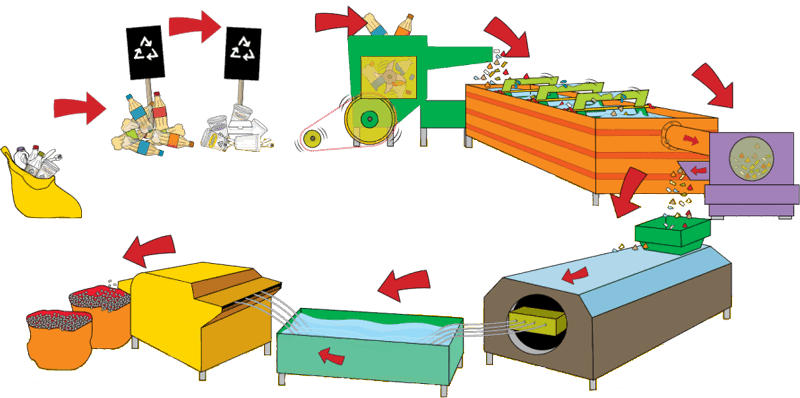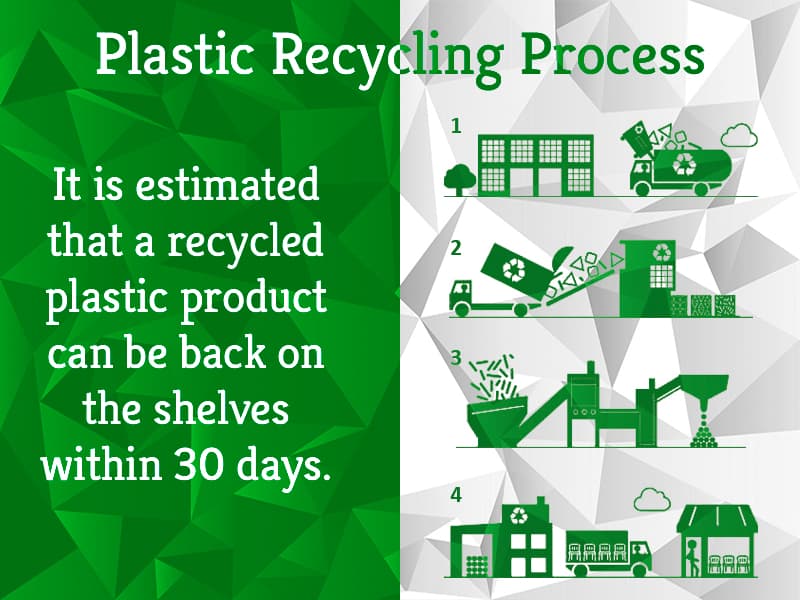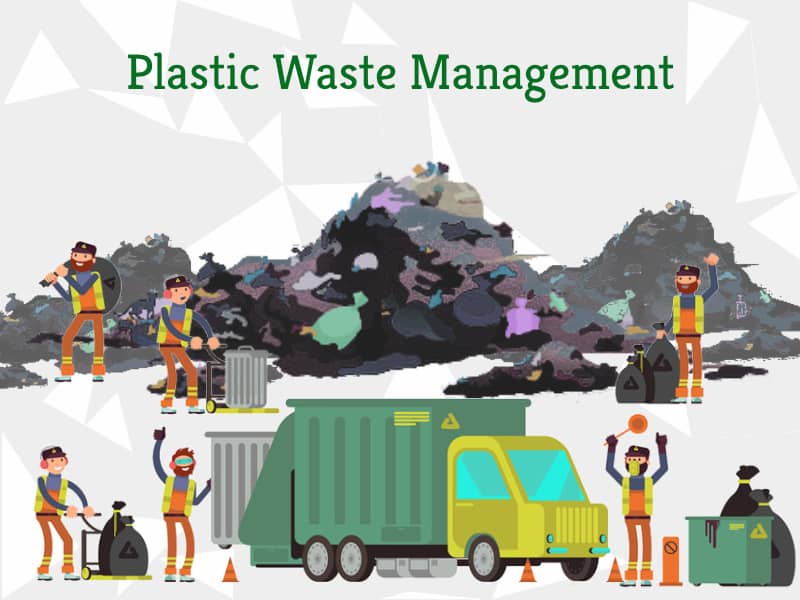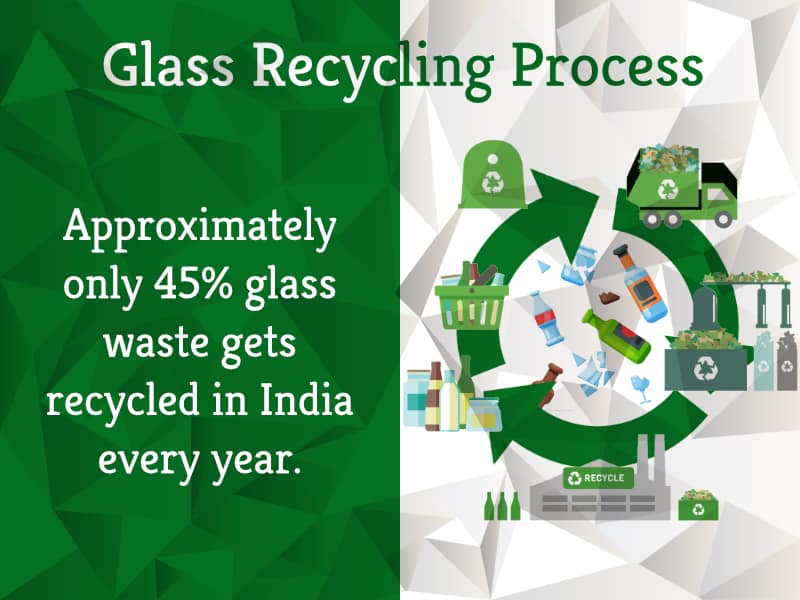No products in the cart.
Approximately 6 Million Tonnes of Plastic Waste goes un-recycled every year in India.
The idea of reusing products has been around for quite some time. Though the plastic recycling process has its limitations and flaws, it is a constantly evolving process. Of the 7 major types of plastics that are largely available, these four are most commonly recycled:
- PET- Polyethylene Terephthalate
- HDPE- High Density Polyethylene
- PVC- Polyvinyl Chloride
- LDPE- Low Density Polyethylene
Like all recycling processes, the plastic recycling process refers to the process of re-using plastic waste by means like reprocessing. Due the low biodegradability of plastics, understanding of the recycling process has become essential.
Plastic Recycling Process
The recycling processes can be broken down into 7 distinct steps :

Step 1 – Collection
Plastic waste is growing by the ton every day. Using a country-wide network for collection of plastic waste through rag pickers, waste collectors and waste dealers and recycling enterprises this plastic waste is collected and brought to the Sorting facilities for further processing.
Step 2 – Sorting
This second step is the most crucial one as he actual plastic recycling process starts with Sorting. Sorting of different plastics occurs based on:
- Color
- Resin Content
- Plastic Recycling Code
Sorting helps identify and eliminate contaminants. The process may employ manual methods or the use of specifically designed machines.
Step 3 – Shredding
Once the recyclable plastics have been sorted, they go through the shredder. The shredder grinds and cuts the plastics into tiny pieces. After going through shredding, heavier and lighter plastics are separated using specially designed machines. This separation helps segregate different plastics.
Step 4 – Cleaning
The process of Sorting and Shredding ensures that the correct types of plastics are being processed and assorted together for further processing. After a complete separation, the flakes or chunks are then washed thoroughly with detergents to remove the remaining contamination.
Following the cleaning process, the plastic flakes are subjected to moderate heat so that they can dry.
Step 5 – Melting
Post drying, the plastic flakes are melted down under regulated temperatures. The regulation of temperatures ensures that the plastics are melted without getting destroyed. On melting, these plastics are extruded and resized to be processed in to granules which will later be compressed into pellets.
Step 6 – Pellet Making
To enable the plastics to be reusable processed granules are compressed into tiny pellets. These pellets are also known as nurdles. Pellets also enables in storing similar types of plastics based on color, types of resin along with easy distribution.
Step 7 – Re-Using
It is important to note that, pellets recycled from particular types of plastics cannot to be re-used to make the same kinds of plastics. Instead they are re-purposed and redesigned in to other useful products.
Summary

Article Name
Plastic Recycling Process : All You Need to Know
Description
Plastic Recycling process can put a plastic product back on the shelves in as many as 30 days. Here is all you need to know about it.
Author
Team GreenSutra
Publisher Name
GreenSutra
Publisher Logo


